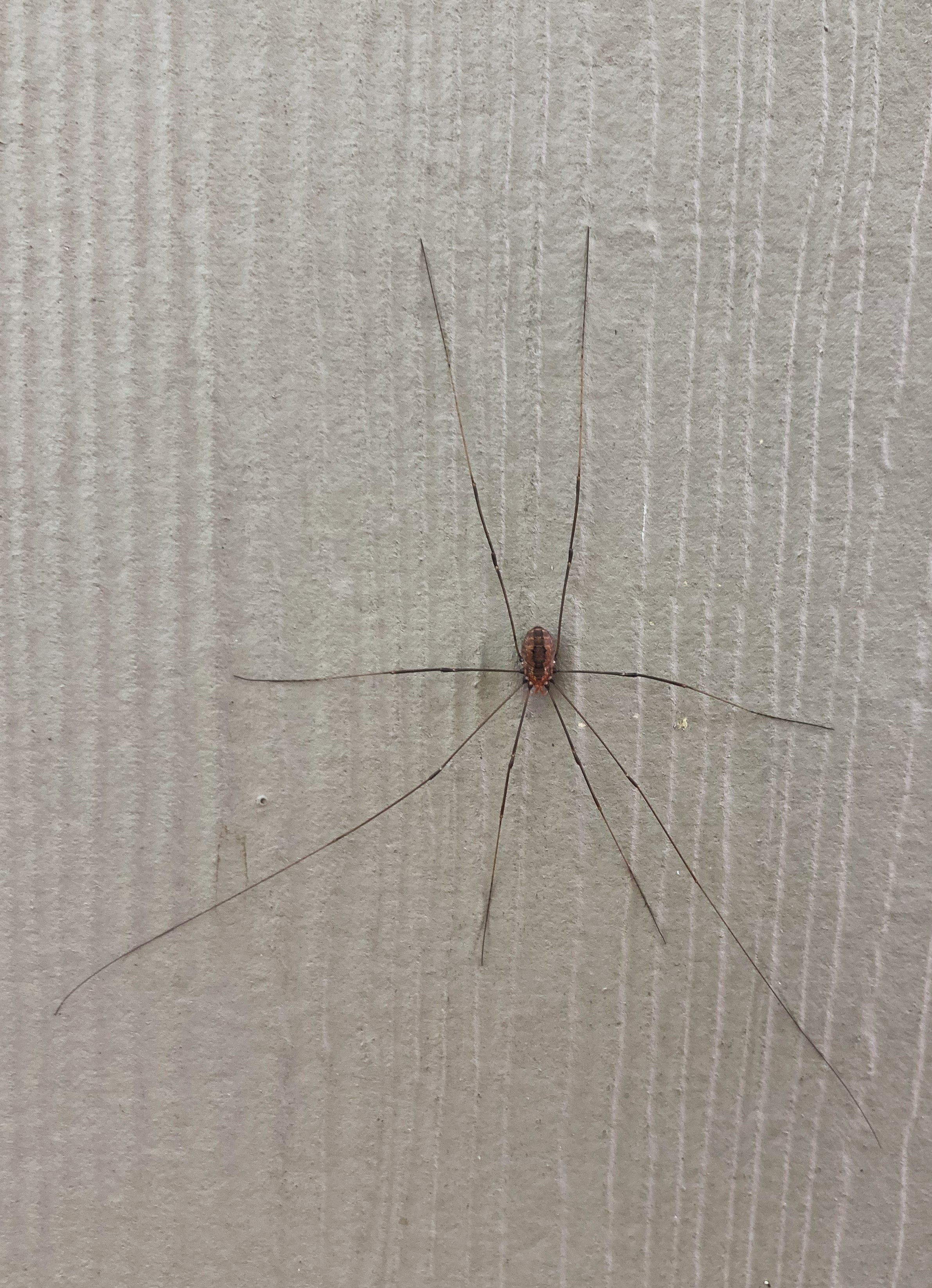Grandaddy Longlegs or Harvestmen
Contact
University of Arkansas System Division of Agriculture
Cooperative Extension Service
2301 S. University Ave.
Little Rock, AR 72204

Grandaddy Longlegs or Harvestmen
Somehow, I grew up with the notion that you never squished a grandaddy longlegs; instead, you grabbed it by a couple of its long legs and relocated it outside. Other spiders didn’t receive such TLC. I have no memory of my parents or siblings informing me of this ritual — instead, it just seemed to always be there. Later when I learned about cavemen, I assumed my aversion to killing these spider-like opilionids was because way back in our evolutionary past we shared a cold, dark cave and I considered them a kindred spirit.
Even with the benefit of an entomology class in my college years, I now find I have been way off base in assuming grandaddy longlegs (to some daddy longlegs) or correctly, harvestmen, are spiders. They belong to the taxonomic class Arachnida which contains other eight-legged animals such as mites, ticks, scorpions, and true spiders. But it turns out they are more closely related to scorpions than spiders.
The 6,500 species of harvestmen found throughout the world are classified in the order Opiliones. It is an ancient group of animals dating back at least 410 million years, making it one of the earliest land animals. At that early period of life on terrestrial earth they fed on algae, fungi and land plants that had evolved a vascular system but not yet learned how to make leaves. Throughout its long evolutionary history, harvestmen have mostly fed on detritus but they will also feast on insects.
Differentiating a grandaddy longlegs from a spider is relatively easy. Spiders have a two-part body with an hourglass figure whereas harvestmen have a single fused, hard-shelled elliptical body with the legs attached at the front. And if you inspect closely, spiders have three or four pairs of eyes whereas grandaddy longlegs only have a single pair. These eyes are rather primitive and are only thought to discern light and dark and pick up movement. The second pair of legs are longer than the rest and have been adapted to serve the function of antennae, thus making up for the poor eyesight. Additionally, you will never find a web associated with a grandaddy longlegs because they can’t spin silken webs.
The Opiliones prefer moist, dank places and are mostly nocturnal, feeding at night. Eggs hatch in the spring and they go through about six instars before reaching maturity in the fall. I cannot recall seeing what I considered a young grandaddy longlegs (one of the early instars), probably because they feed in less obvious locations while they are small and young. As they molt, and before their exoskeleton hardens, they are more vulnerable to predation. I’ve never seen it but apparently, 20 or 30 of these animals will sometimes ball up into a tangle of bodies and legs, not in a sexual orgy but as a defense mechanism.
One of the persistent and completely unfounded myths about harvestmen is that they are poisonous, but that their fangs are too short to bite human flesh. Both points are wrong. They have no poison glands and they are completely harmless to humans. But they can be stinky when threatened. They emit an offensive odor as a protective mechanism and many predators seem to leave them alone.
The most common harvestman in Arkansas is Leiobunum politum, but I think the photo accompanying this article is of L. vittatum, the eastern harvestman.
The name “harvestman” is most often credited to the fact that these animals are most abundant and commonly seen in the fall – the harvest season of the year. But in England where that name seems to be the one most often used, it is considered an ill omen to kill one because it will result in a poor harvest.
Maybe my aversion to squashing a grandaddy longlegs was something my grandmother instructed me on, for she was full of more than one superstitious belief. Or, more likely, I learned inadvertently that squishing one resulted in stinky fingers, and I decided on my own that relocating them outdoors was a better way of dealing with them. Or, maybe it was my caveman ancestry.
